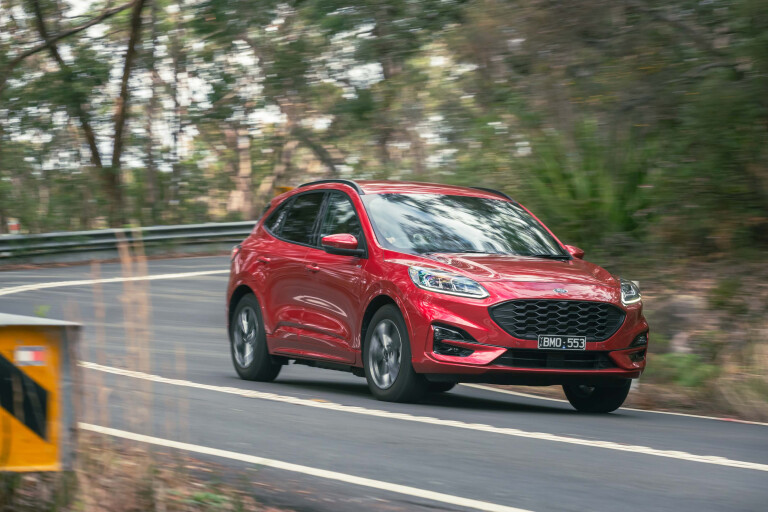
UPDATE 1: PHEV as basic hybrid
Statute of liberty?
- Price as tested: $63,885
- This month: 371km @ 5.8L/100km
The current Ford Escape launched here not quite a couple of years ago to build on the relative success of its predecessor.
I always thought that it was unfairly ignored – like many of Ford’s excellent range – as the old car had the grunt few in the segment had and kind of led the way for sporty affordable SUVs with the ST-Line version. And had been hampered for a while by the terrible Kuga name before reverting to Escape.
We were promised – promised – the plug-in hybrid not that long after launch but it wasn’t until June 2022 that the PHEV arrived.
The PHEV drops the 183kW turbo four of the ICE ST-Line for a 2.5-litre Atkinson-cycle four-cylinder with an electric motor and a 14.4kWh lithium-ion battery.
With a combined output of 167kW, power is down but there are the obvious benefits of electrification to soften the blow. Ford doesn’t give a torque figure, but it’s evidently reasonably solid.
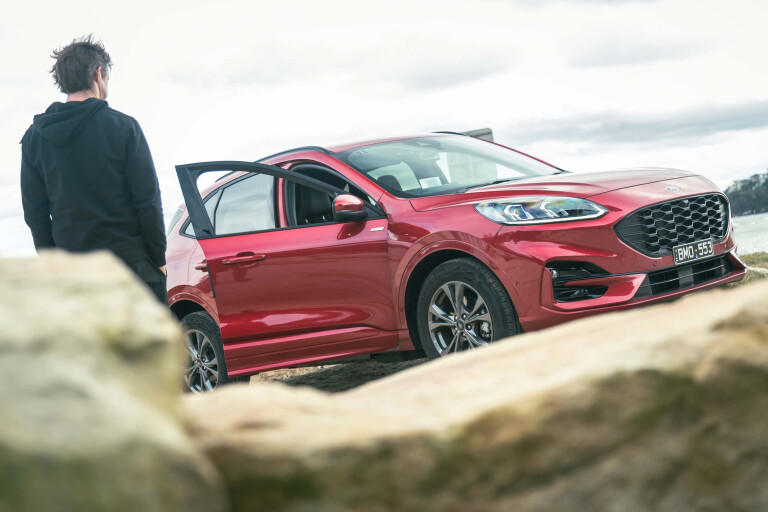
In terms of driving modes, you can choose from:
- EV Auto (which is also the default)
- EV Now (which forces electric-only)
- EV Later and EV Charge (uses the engine to charge the battery)
Ford reckons you’ll get up to 56km in EV mode. In the past I’d have said that this was a bit of a dodgy number with experience telling me most PHEVs miss by twenty or even thirty percent. I picked the car up with a full battery and a head full of dreams, aiming it down the M2 Motorway to my home south of Sydney airport which is exactly 52km.
I kid you not, the engine kicked in for the first time just 900 metres from my front door, which is an epic achievement really because a good chunk of that run was at 100km/h and most of the rest of it at 80km/h. If I had taken the slower, less motorway-ey way home I’m sure it would have made it all the way on electrons.
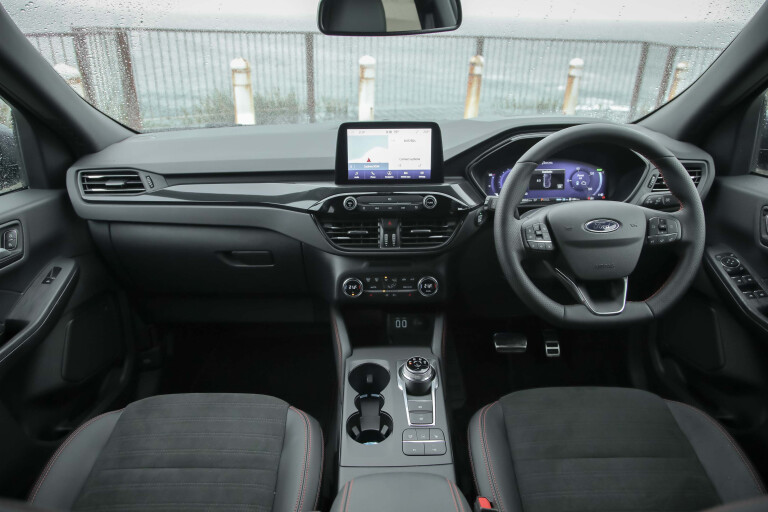
I kid you not, the engine kicked in for the first time just 900 metres from my front door, which is an epic achievement really because a good chunk of that run was at 100km/h and most of the rest of it at 80km/h.
Our Content Director Jez Spinks eked out 57km of electric-only driving too, and he doesn’t spare the rod. So I’m optimistic that the battery range is basically bang-on for normal driving and supports my hypothesis that if you’re disciplined with the charging and have an average commute (between 15 and 30km per day) you’ll rarely feel the 2.5-litre kick into life.
Speaking of charging, the supplied charger will get you from E on the dash (in truth, the battery is never fully empty) to full in six hours, so if you have a domestic 240-volt outlet handy at work or home, it’s not especially difficult to keep up the charge.
Ford’s official 1.5L/100km on the combined cycle is obviously ridiculous (not Ford’s fault, the testing regime is meant for ICE not PHEV), and it’s a fair way below the ST-Line’s 8.6L/100km figure. The last time I drove an ICE Escape, I got 11.2L/100km.

Something that initially mystified me was that Ford has chosen to attract the PHEV’s presumably sustainability-minded buyers with the sport ST-Line specification, which brings the price to a solid $59,990 drive away.
That’s quite a lot of money, but I guess if it was based on the Vignale, it would crack seventy grand, in part because the price difference between the FWD ST-Line and the ST-Line PHEV is over $16,000.
The ST-Line does leave the factory with a fairly decent specification, including 18-inch alloys, dual-zone climate control, a mix of fake leather and fake suede on the seats, wireless charging, an 8.0-inch touchscreen, digital dashboard, adaptive cruise control, ten B&O-branded speakers for the audio, keyless entry and start, powered driver’s seat, centre rear armrest, front and rear parking sensors and a space-saver spare.
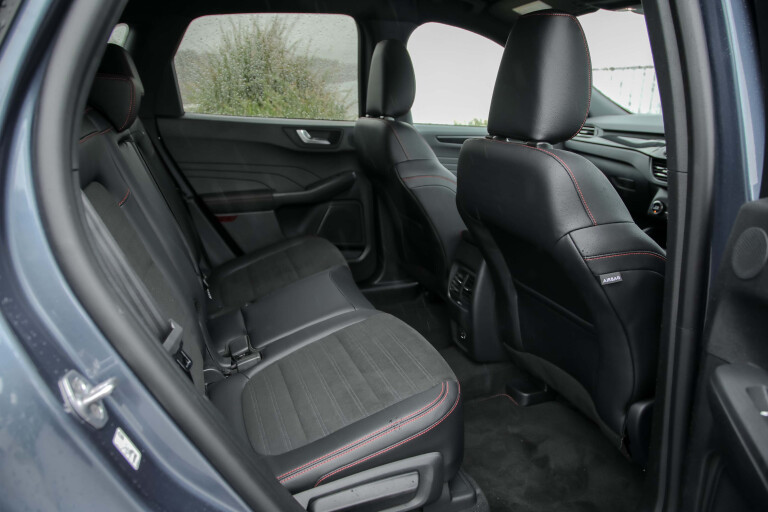
Bizarrely, if you want to upgrade to Matrix LED headlights they’re part of the $1950 ST-Line Option Pack which also has the electric tailgate and heated seats, which seems awfully generous for the money.
Another pack, the $1500 Parking Pack adds auto parking, a forward-facing camera and the funny little door guards that flip out when you open the door and are themselves a marvel of engineering. The price of that pack seems a little stiff, though.
With both of these fitted and Rapid Red paint for $695, the driveaway price – in NSW at least – of my Escape ST-Line PHEV came out at $63,885.
On the safety front, the Escape ships with six airbags, ABS, stability and traction controls, as well as forward AEB with pedestrian detection, forward collision warning, reverse cross-traffic alert, evasive steering assist, traffic sign recognition, blind-spot monitoring, lane departure warning, lane keep assist, driver impairment monitor and auto 000-dialling after a big enough crash if your phone is connected.
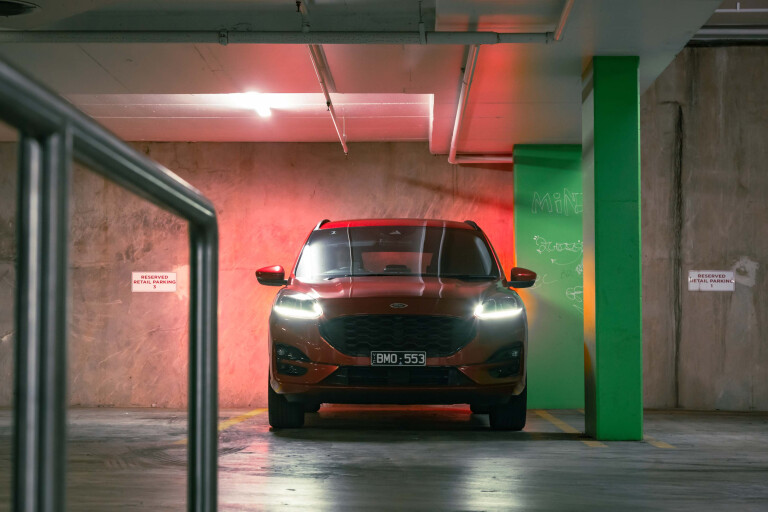
You also get three top-tether and two ISOFIX restraints.
We’ve got the Escape for three months. It will be in my hands for two of them before I hand it over for the final month to Jez Spinks while I take a long holiday that I cannot in all good conscience call well-earned.
In both households, though it will be the car that we use most days, ferrying ourselves and/or our kids around, doing the shopping, the gym and a longer trip with a full charge before we leave to see what a full battery and tank’s range looks like.
The PHEV that makes a decent hybrid when you're lazy
- Price as tested: $63,885
- This month: 427km @ 5.1L/100km
One of the most interesting things about having a plug-in hybrid is that you spend a lot of time explaining to people what that actually means. That’s fine – I am absolutely not complaining because a large part of this job is education – but it has got me thinking about what exactly is the point of a PHEV.
I have written before that it takes a lot of discipline to get the most of a plug-in hybrid, and the fact that it has a combustion engine is the enemy of discipline.
“Battery’s flat,” says the car. “Time to recharge.”
“Ah, bugger,” I reply. Well, not really, this is just some expositional, fictional dialogue to illustrate the point. I don’t talk to cars. Much.
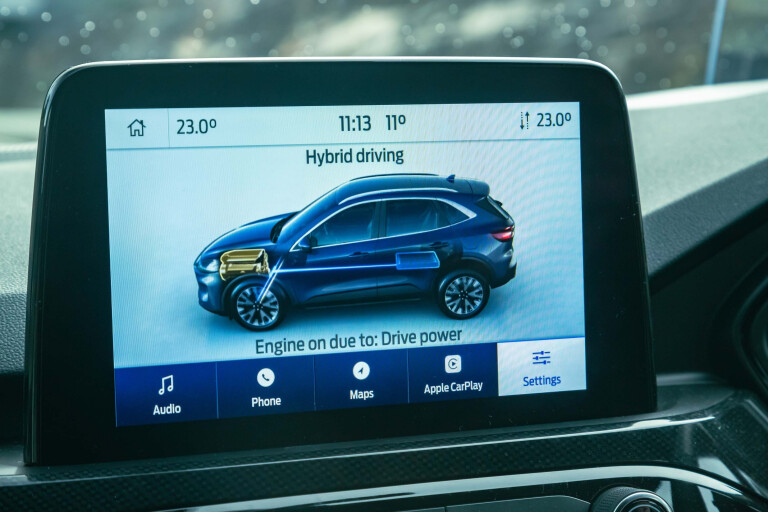
“ So I’ve switched on the engine,” the car quickly reminds me. “So now I’m a normal hybrid.”
And so the days and weeks go by where you think, “Oh, yes, I need to plug in,” and the car itself has rage-quit on reminding you. Thing is, when it’s acting just purely as a hybrid, this car is remarkably effective.
This month we’ve been bombing around in it a fair bit because life suddenly got very busy. It took us up to the Blue Mountains on a cold, wet Saturday in blissful comfort. The Escape is a terrific cruiser, quiet and frugal, knocking out a trip figure of 4.1L/100km at motorway speeds and dealt with the ascent and descent of the lower Blue Mountains.
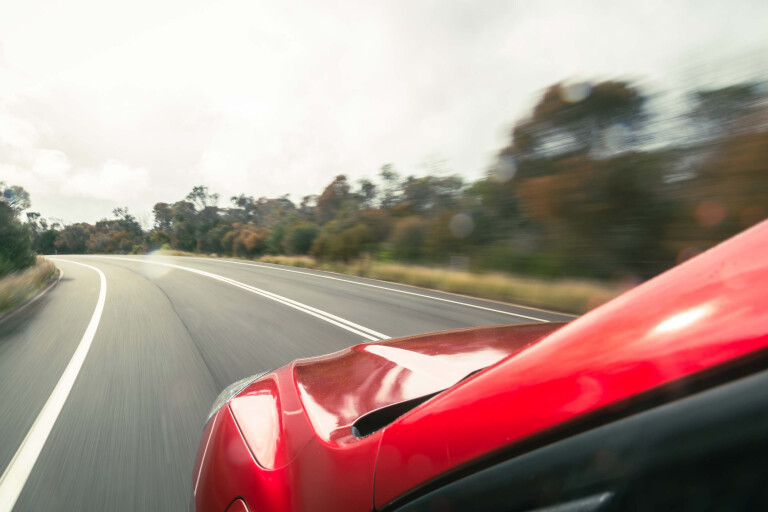
The big ballooney Continental tyres are quiet even on the disastrous stretches of the M4 and M5 and there’s barely a rustle of wind noise from the body or mirrors. The seats are so comfortable for the long ride, gripping you well with their mix of fake leather and Alcantara inserts. The slightly spongey steering wheel even starts to make sense.
It performs well on the freeway. It’s not as punchy as the turbo-engined ST-Line on which the Australia PHEV model is based, but overtaking is still better-than adequate and you’ll rarely wonder if you’ve made the right decision to pull out. The ICE engine isn’t the quietest when you’ve called it into action with a floored throttle, but it’s not going to ruin your day.
Watching the hybrid system diagram telling you which way the power is flowing and when the engine is on or off is really very instructive. In the early days, hybrids weren’t that great at the fast stuff, really making more sense in suburbs harvesting energy.
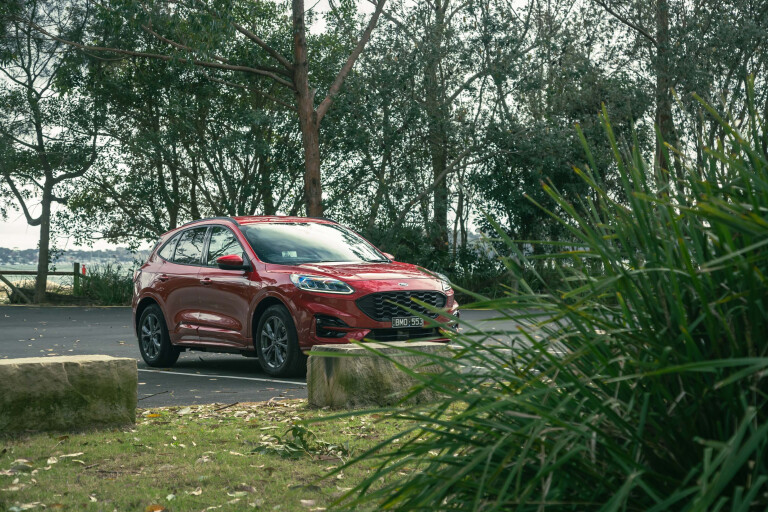
It performs well on the freeway. It’s not as punchy as the turbo-engined ST-Line on which the Australia PHEV model is based, but overtaking is still better-than adequate
The Escape also has a neat trick of telling you how many kilometres have passed on hydrocarbons and how many on electrons. Even with the big motorway runs, the Escape is still moving on electricity better than half the distance. The first month’s electricity percentage was 61 percent, while the second dropped slightly to 58 percent.
There’s another reason this car is good for road trips. Sitting in the car watching the fog roll down into Megalong Valley, bakery treats in hand, the car sat quietly with the heater ticking over, the heated seats on and the 2.5-litre engine off.
One of the great advantages of the big battery is that even when you haven’t plugged in, it harvests plenty off the brake pedal and keeps things running for longer without the engine kicking in. While there’s still a 12-volt power system and battery, it means that the car is better set up to understand the way electricity is being shuffled about.
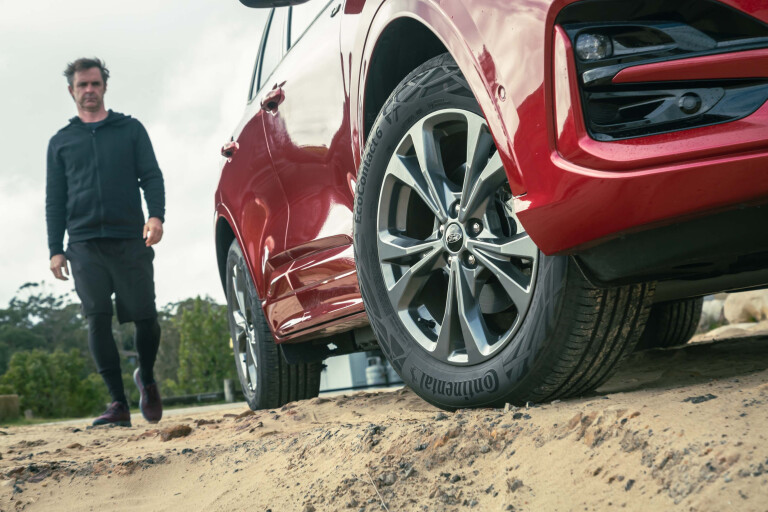
I had planned for a bombing run to Canberra but events conspired against me and I wasn’t able to go. I was really looking forward to the trip and more so after the Katoomba run because it proved itself to be so comfortable. Fingers crossed I can make that happen before it goes back to Ford because a proper six hour return journey will really test things.
What it will also test is my ability to find a working public charger. I had charged the Escape a couple of times as I have solar at home but I also wanted to see what it’s like plugging in while I’m shopping.
A nearby major chain supermarket has four 22kW chargers – perfectly fine for the Escape’s 14.4kWh battery – and I rolled in. One was broken (of course, but I knew that from the app) one was charging a Tesla so two were free.
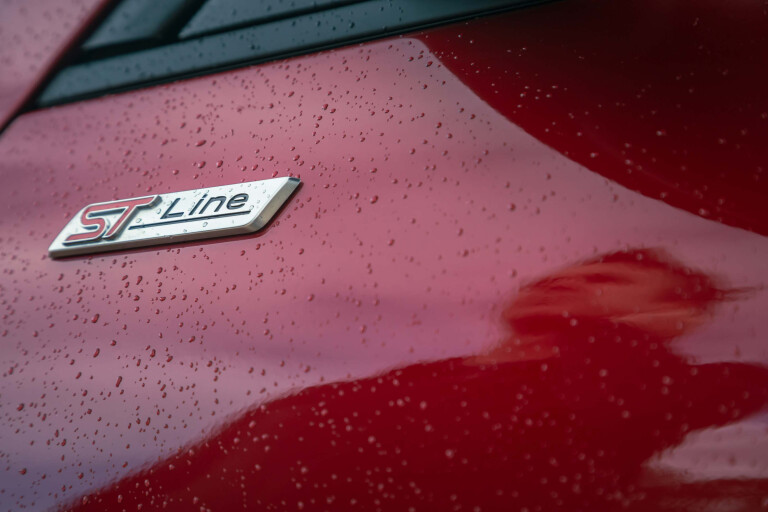
Except you needed your own cable. Shuzzbut. Never mind, I tried another time at the new Ampol charger in Rosebery. The Escape’s Type 2 charge plug is in the front right guard, easy enough. Except the Ampol charger has one CHAdeMo and one Type 2 with DC.
The Escape’s charge port doesn’t have a blank for the flat DC plug section used by fast-charging cars. So I couldn’t plug in for that sweet, sweet free introductory offer. And a trip to a Westfield with 11kW chargers was also aborted because when I got there – you guessed it – the charge plugs were Type 1s.
Given how good the Escape is as a hybrid, I really do have a pressing question – instead of the PHEV, why do we not get the Escape hybrid, which would give RAV4 prospects pause for thought?



COMMENTS